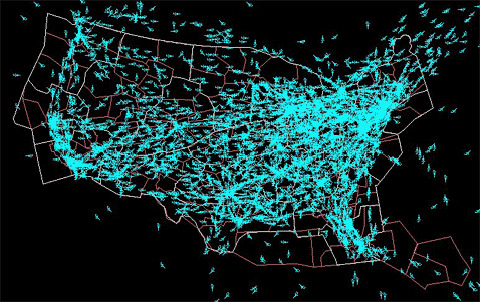
Photo Courtesy of the FAA
Every field has its fair share of jargon. However, there seems to be a pretty big abundance of them in the UAV world. Today, we’re going to break down some terms that every drone operator should know. We’re going to start with a basic one: the National Airspace System.
What is the National Airspace System (NAS)?
The National Airspace System (NAS) is an interconnected system that makes up our airways. It consists of the 45,000 flights that cover 29 million square miles of airspace, both domestic and oceanic. Ultimately, the NAS serves 2.9 million American air travelers each day.
Airports, navigation stations, charts, manpower, technical information, and rules also have a part to play. In essence, the NAS is shorthand for America’s commercial airline infrastructure. The FAA administers the NAS through its network of air traffic controllers.
The NAS and Drones
![]()
Photo Courtesy of Max Pixel
Since the NAS includes the area in which drones operate (the sky), the rules and regulations the NAS maintains apply to them. As a result, it’s a good idea for drone operators to understand how the NAS pertains to them.
There’s no such thing as “unregulated airspace” in the NAS. Once you get off the ground, you’re in the NAS’ jurisdiction. Generally, the FAA divides airspace into one of two categories: controlled and uncontrolled. The latter consists of any airspace below 400 feet of elevation. Everything above that line, in addition to airspace near commercial airports, falls into the controlled airspace category.
Drone operators are free to fly in uncontrolled airspace. However, they’re not allowed into controlled airspace without becoming an FAA-Certified drone pilot. FAA-certified pilots will also need to register their drones with the FAA.
What are some other UAV terms you’d like an explanation for? Let us know on social media.


